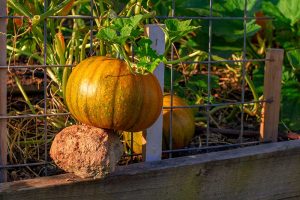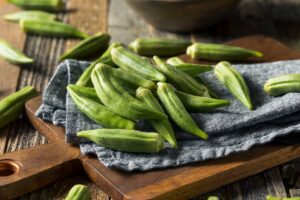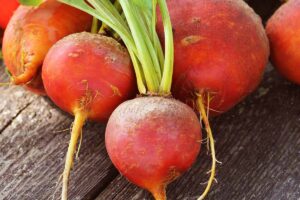It can sometimes seem like lettuce and fungal issues go hand-in-hand.
Both these leafy greens and many nasty fungal pathogens love nothing more than moisture and cool temperatures.
If you’re seeing white spots on your lettuce, it’s usually a safe bet that a pathogen has infected your plants.
But it’s not just fungi that can cause white spots on lettuce leaves.
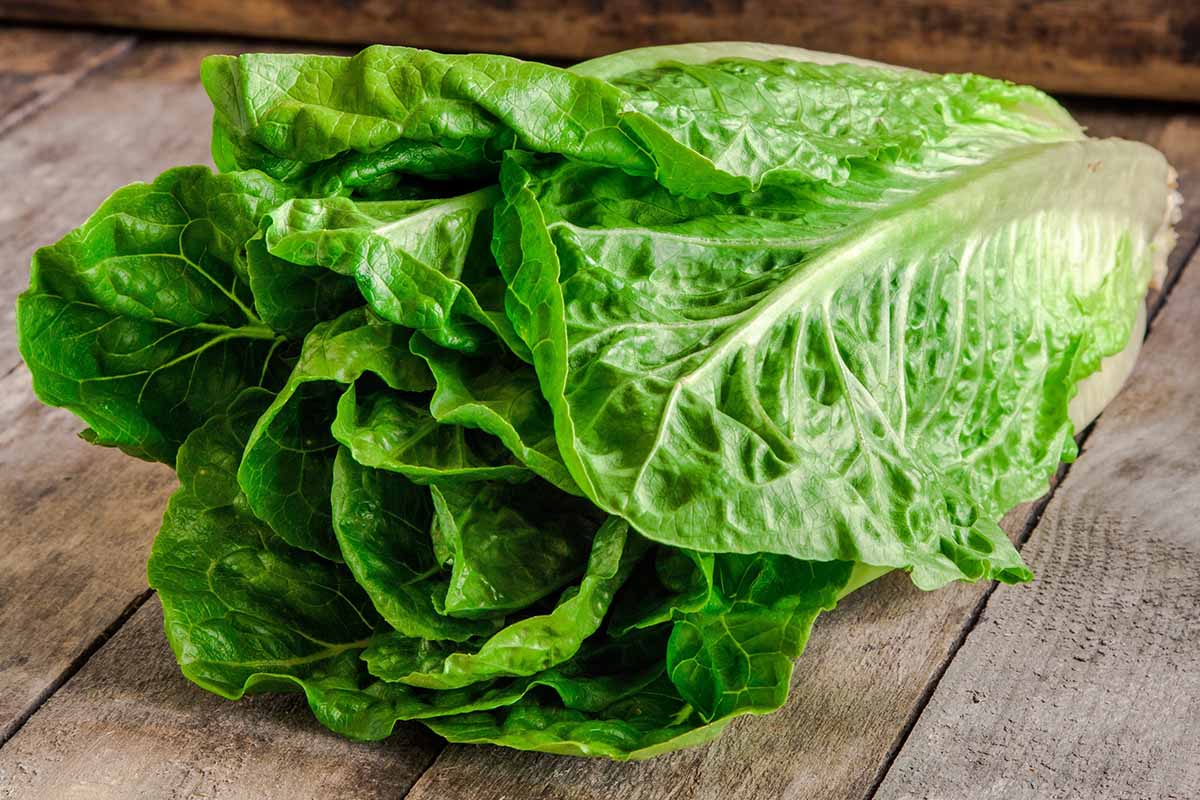
We link to vendors to help you find relevant products. If you buy from one of our links, we may earn a commission.
There’s also a pest that strongly resembles a fungal disease and has fooled more than one experienced gardener into thinking that their crop had some sort of disease, when really it was an infestation.
If you need a refresher about how to grow lettuce, check out our guide.
In this article, we’ll help you narrow down the cause of white spots on your lettuce and figure out how to treat the problem so you can get back to enjoying your favorite salad.
Here’s the lineup:
Common Causes of White Spots on Lettuce
If you’re seeing spots, you need to act sooner rather than later, so let’s dig right in and look at the three common issues that cause white spotting on lettuce crops.
1. Downy Mildew
Downy mildew has pretty distinct symptoms.
This disease, caused by the water mold (oomycete) Bremia lactucae, appears as yellow or light green angular spots on the top surface of the leaves.
On the undersides, you’ll find blotches and spots of white fluff.
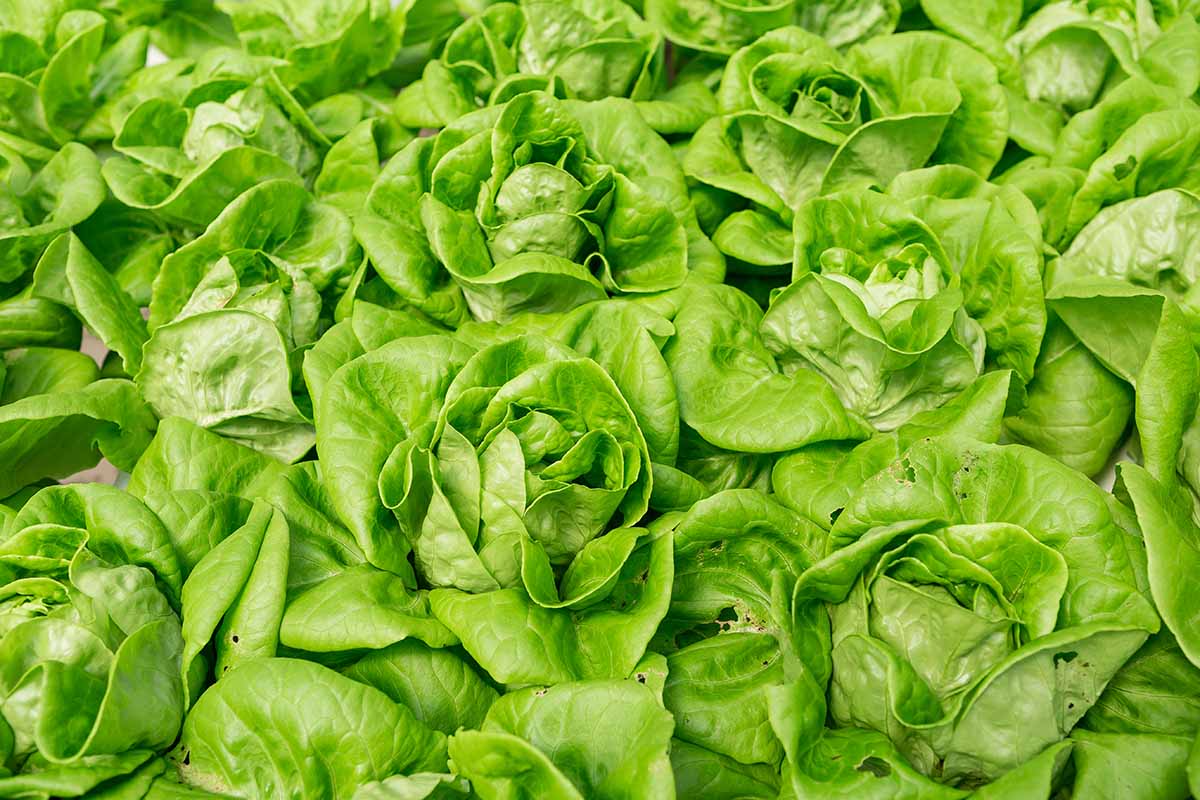
As the disease progresses, the upper lesions turn brown and dry, and if left unchecked, the leaves might die entirely.
It typically starts on the older leaves and rapidly spreads to new growth. If downy mildew takes hold at the seedling stage, the plant will likely die.
The pathogen attacks all species in the Lactuca genus – and a few other genera, too – and thrives in moist, cool conditions. It spreads via water, so rain, high humidity, and irrigation can send it far and wide through your lettuce patch.
Beyond reducing moisture by watering at the soil level and spacing plants appropriately, you can use a preventative fungicide if the conditions in your garden are conducive to the disease – or you have experienced it before.
Otherwise, it’s best to plant resistant cultivars and there are lots to choose from. The following are just a sampling of cultivars resistant to downy mildew.
- ‘Adriana’
- ‘Antonet’
- ‘Australe’
- ‘Auvona’
- ‘Bauer’
- ‘Blend’
- ‘Bluerock’
- ‘Breen’
- ‘Butterhead’
- ‘Carlsbad’
- ‘Cherokee’
- ‘Conversion’
- ‘Edox’
- ‘Elf Ears’
- ‘Frisygo’
- ‘Green Star’
- ‘Gondar’
- ‘Intred’
- ‘Milagro’
- ‘Mottistone’
- ‘Optima’
- ‘Powerhouse’
- ‘Red Cross’
- ‘Red Rosie’
- ‘Starfighter’
- ‘Teodore’
- ‘Willow’
Note that resistant doesn’t mean immune so if you have a bad outbreak in your garden, even these may become infected.
By the way, I love ‘Optima.’ It’s one of the few cultivars that I have never, not once, had a problem with. It’s a butterhead type that matures in just 52 days.
Pick up seeds in a variety of different packet sizes at High Mowing Organic Seeds.
You can learn more about downy mildew and other common lettuce diseases in our guide.
2. Powdery Mildew
It starts out looking like someone splattered patches and spots of flour on the leaves, and before you know it, the powdery growth is coating the entire head.
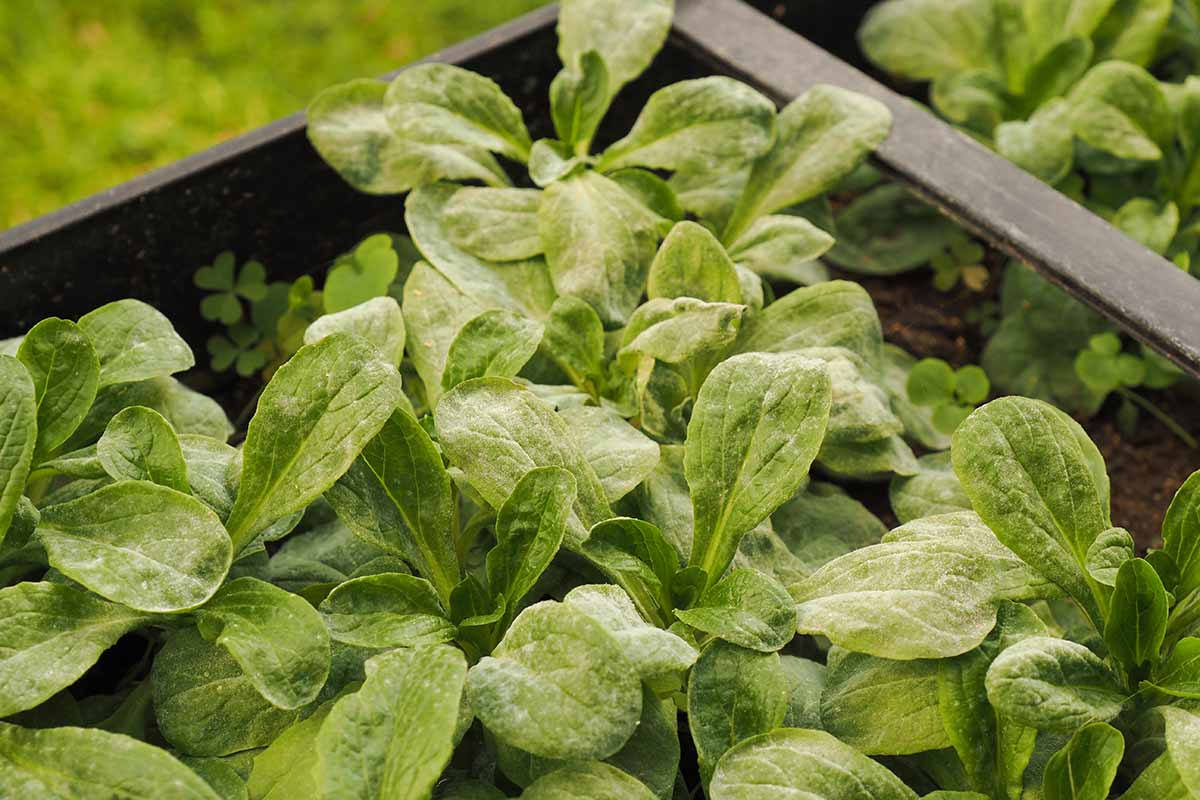
Even worse, as the disease progresses, the leaves might become deformed, dry up, and turn brown.
If you’re seeing these symptoms, it’s likely that your crop is suffering from powdery mildew, a disease caused by the fungus Golovinomyces cichoracearum.
Powdery mildew is distressingly common, and there are a variety of ways to treat it.
From applications of milk to sophisticated fungicides, there are a number of different treatment options which you can read about in our guide.
3. Mealybugs
Wait, what? We’re talking about white spots on lettuce here, not bugs.
Mealybugs are sap-sucking insects in the family Pseudococcidae, and they could easily fool you into thinking your crops were infected with a disease.
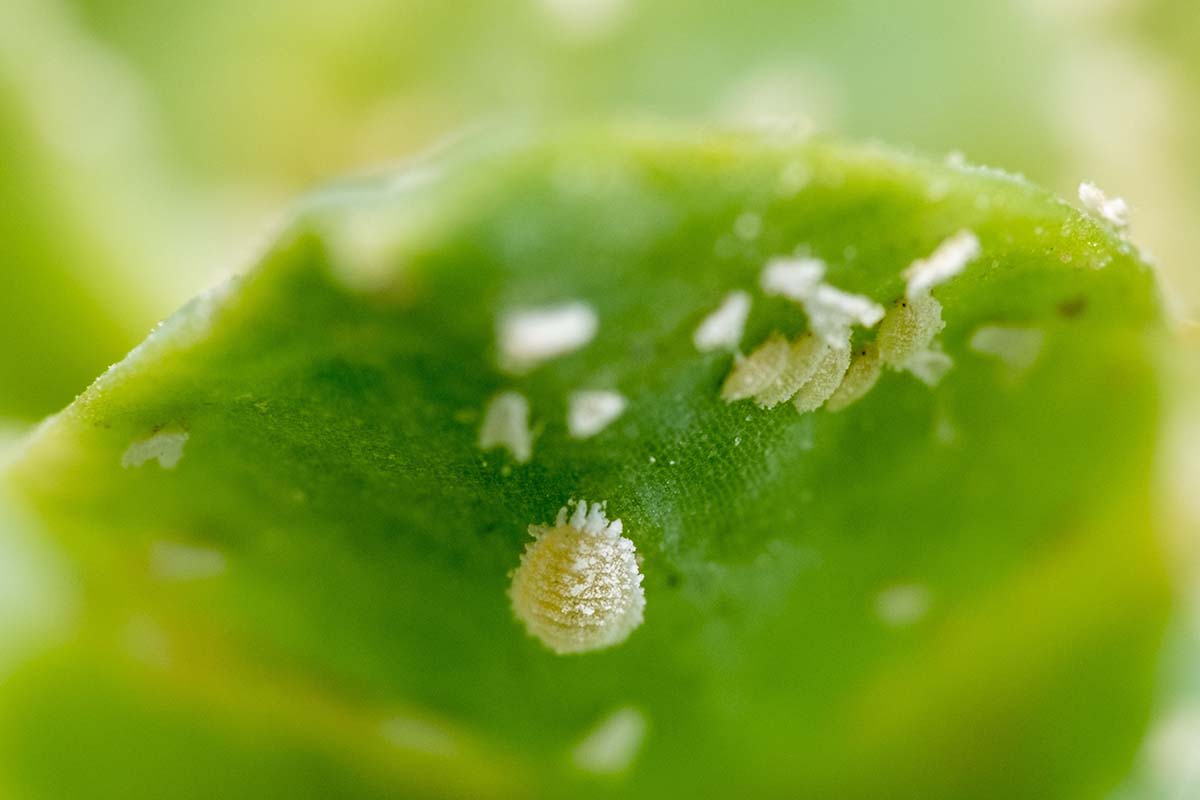
Mealybugs are small, somewhat flat, and they move very slowly. So when you go to check out your plant, it looks like white waxy lumps growing on the foliage – but those aren’t lumps, they’re insects.
They can also be slightly yellow or a grayish color, and they generally like to cluster in hidden areas under the leaves, along the stems, or the middle of a rosette.
We usually know they’re around because we see the insects themselves, but they can also cause stunted growth and yellowing as they suck the life out of your leafy greens.
Read our guide to dealing with mealybugs to learn how to manage these pests.
Out, Damned Spot
Since it’s the leaves of the plant that we eat and not the fruit it produces, it’s all the more devastating when the foliage develops white spots.
Make sure to monitor your garden regularly to watch for the first sign of any of these issues. If you see them, act fast and you can save your crop.
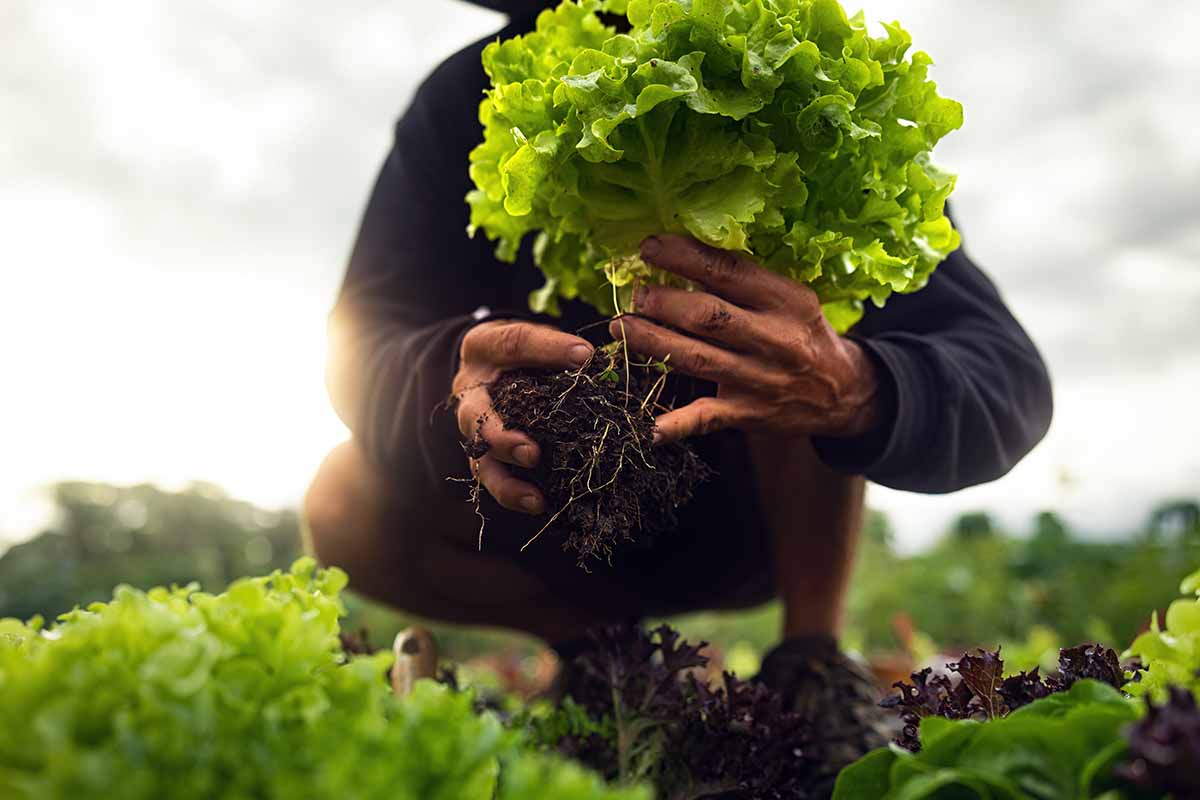
Are you seeing spots? Which of these dastardly foes are you facing? Are you having trouble figuring things out? Let us know in the comments section blow and we’ll try to help.
And for more information about growing lettuce in your garden, we have a few other guides that you might want to check out next:


